‘Glider Base, This is Zodiac’
In walkie-talkie etiquette, you call to the person you want to talk to, then identify yourself. So when ‘Glider Base, this is Zodiac’ comes over the radio, it means that someone in a little inflatable rubber boat (called a zodiac) wants to talk to the person who is running the gliders.
Six of us were in that boat, bobbing in the waves about a half-mile from the Palmer. We were about to launch glider RU07 for a day’s sampling. That morning we had reached ‘Big Red,’ the point where glider RU26 had seen signs of our target—Modified Circumpolar Deep Water—two weeks ago.
While the science teams spent the day sampling the water beneath us, glider RU07 headed southeast to sample the surrounding water. By the end of the day, it had found something surprising. Read on through the slideshow to see what happened:
- The main deck on the stern of the Palmer is about 10 feet above the water. To put small boats like our zodiac over the side, they use a great big crane. In calm weather, a marine technician rides the boat on the way down while two other technicians manage a bow and a stern line.
- The rest of the passengers (pictured is glider wrangler Eli Hunter of Rutgers University) climb down a twisty rope ladder and then hop into the boat. Timing is important. This morning we had a four-foot swell that tossed the little boat up and down along the side of the Palmer. The marine techs offered key advice: when you decide to go, they said, your hands are going to want to keep grabbing on to the ladder—but you have to let go or you will end up dangling!
- Eli, Filipa Carvalho of the University of the Azores, Chris, and I accompanied marine technicians Jullie Jackson and Alan Shaw to launch the glider. The glider’s tail and especially its wings are delicate. We kept the wings safely taped together in the bottom of the boat until we were ready to launch, so that if a wave knocked one of us off balance we wouldn’t snap off a wing.
- When Jullie called to Glider Base she was talking to Dr. Josh Kohut on the bridge of the Palmer, 55 feet above the water. He was conducting last-minute readiness tests on the glider. Over short distances (a few miles) the glider can use a radio to send data directly to the ship. When it gets farther away, it has to call a satellite that relays information to Rutgers University. Scientists there analyze the data and send summaries back to the ship by email.
- With the glider perched on the side of the zodiac, Eli and Filipa attach the wings—they just slide into a slot and snap into place. Do you think those wings look way too small to support a 100-pound glider? That’s what I thought until I remembered how much more dense water is than air, and how the glider weighs much less in water than in air. Penguins are similar if you think about it—they fly through the water with wings that are far smaller than a similar sized bird that flies in air.
- At 10:22 a.m. we slid the glider off its cradle and into the water to begin a couple of test missions. Gliders cost roughly $130,000 each, so you don’t put them into the ocean without making sure they are working properly. That’s why we have a safety line tied to the glider’s tail for now.
- With the Palmer off in the distance, marine technician Alan Shaw pays out line on the glider. A few minutes later it ran an ‘overdepth test.’ This is a safety check. If something goes wrong with the glider program and it dives deeper than it’s supposed to, the system will cancel the dive and tell the glider to surface again. Dr. Kohut told the glider to dive to 50 meters, but he set the overdepth limit at 15 meters. Sure enough, the glider obediently began its dive but surfaced after hitting the 15-meter mark. Verdict: pass.
- Next RU06 went on a 10-minute test mission to make sure we could get data back from it afterward. The glider made two more dives to 15 meters and then surfaced and called back to Glider Base. With a few more commands, Dr. Kohut retrieved the data RU06’s sensors had collected on the dives, while four-foot rollers gently tossed our zodiac and we relaxed in the Antarctic sunshine.
- At about midnight we went back out to retrieve the glider, which had been calling over the radio, sending us data, and listening for more instructions every hour since we had launched it. In 14 hours, RU06 had navigated on its own and traveled about 6 miles under its own power. It had made 33 dives to 100 meters (330 feet) depth, returning information about water temperature, salinity, and a measure of the amount of photosynthesis taking place.
- Oceanographers get very good at making sense of data plots. Here, Dr. Kohut’s computer shows a map of possible sampling locations on Google Earth. The science team has to decide which of these the ship should visit based on graphs like the ones on the table. They compared plots of water conditions from RU26’s visit two weeks ago (center) against what glider RU07 found today (left). The measurements are surprisingly similar, suggesting that the currents here are long-lasting and may influence conditions for life. Without losing any time, the ship steamed over to this surprising patch. We’ll get more detailed information from the CTD rosette and the water samples it brings up.
One of the main reasons Dr. Kohut brought gliders down to the Ross Sea was to do something called ‘adaptive sampling.’ It’s a simple and smart idea—take a look at conditions in the ocean, and then choose the best place to do your experiments.
But the catch has always been that it’s really hard to take that first broad look into the ocean. Oceans are big, deep, and dark—you can’t tell very much about them without driving a ship from point to point and lowering instruments into the water. But with gliders moving around on their own and sending their data back to us, we finally have enough information to be adaptive—to react to situations as we learn about them.
Or, as Peter Milne of the National Science Foundation put it this evening, “It’s like doing science with your eyes open.” It sounds kind of silly, but for many branches of oceanography, technology like these gliders is only just starting to make this possible.


 January 21, 2011
January 21, 2011 
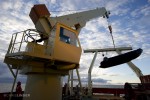
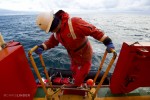
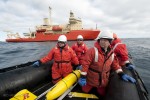
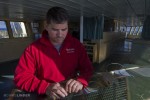
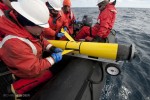
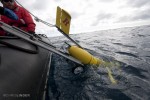

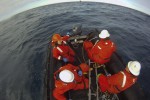

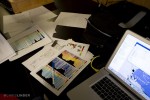







5 Responses to “‘Glider Base, This is Zodiac’”